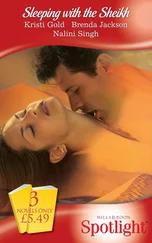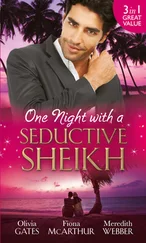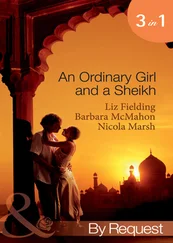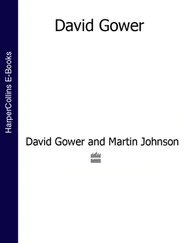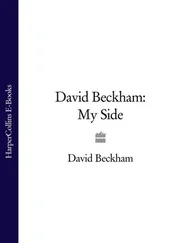
Quokkas, a type of marsupial, on Rottnest Island, near Perth, Western Australia
In Australia I was extensively interviewed on several local and national programs on ABC, none more important than the long-running Science Show hosted on radio by Robyn Williams. Robyn is an expat from Britain whose abilities in science communication have made him widely recognized and admired by the public, a kind of Aussie version of the late American astronomer-broadcaster Carl Sagan. I have come to know Robyn very well, as we have crossed paths often in Australia and North America. He has been the only host since the Science Show began to broadcast in the spring of 1974, and his program was a wonderful opportunity to talk about my ideas in depth.
By the time I had finished my first visit, I had not had time to get outside Melbourne and Sydney and so had still not seen any of the fabled wildlife of the continent. Nevertheless, I had fallen head over heels for the country and its people. Back home, it seemed everything I looked at triggered a memory of Australia. “Gee, in Sydney. .” I'd say. Finally, Tara looked at me suspiciously and asked if I had a girlfriend back there.
As a result of that first visit, several groups invited me to return to give talks, and I was determined to go back with Tara. I was also approached by Patrick Gallagher, head of Allen & Unwin Publishers, an Australian company that had started out as a subsidiary of the English publishing house of the same name but in 1990 became independent. We have become good friends, and I have enjoyed a close relationship with the company. When I told Patrick I wanted to set aside some of my Australian book royalties to support Aboriginal and environmental groups in Australia, Patrick promptly offered to contribute 5 percent of the profits the company makes on my books to the fund.
Soon I was planning a return visit to Australia, this time to tour several cities to talk about my books Metamorphosis (my first autobiography) and Inventing the Future (a collection of columns I had written for newspapers). In 1989, Tara accompanied me to see for herself what had so impressed me with the country. We had a whirlwind tour through Melbourne, Sydney, and Canberra with lots of media interest. Sales of the books took off, and they became best-sellers.
Australia is as exotic as any place, yet people are familiar and speak English, so it is easy to get about and converse. Australians and Canadians share a colonial history and ties with Britain, and both are adamantly proud of not being American. In Australia, scores of young Canadians can be found working on farms or waiting on tables, and Australian accents can be heard all over the ski slopes of Whistler and Banff. People in both nations think of themselves (erroneously) as a country with a small population covering a vast area. In fact, much of Canada is covered in snow, ice, or rock, and that's why most Canadians snuggle along the southern border with the United States. Similarly, much of Australia is desert, so most of the population crowds into five major cities on the coasts. But nature and wilderness or the outback are a critical part of what people in the two countries value as part of our heritage and culture.
I once heard the Canadian communications theorist Marshall McLuhan remark that one difference between Americans and Canadians is that Americans will invite new acquaintances into their homes, but Canadians invite them to meet in a pub or restaurant, preferring to keep home for family and friends. I don't know how good a generalization that is, but I do feel Canadians are not nearly as outgoing and open as Americans. I have often been astonished to meet an American for the first time and be invited to stay at his or her home after a very short period of conversation. It is a quality I admire and appreciate.
In Canada, in contrast, we are far slower to extend such hospitality, but when we do, it seems more deeply felt and meant. Australians are much more open and gregarious than Canadians, but without the underlying assumption of superiority many Americans express. And the use of language by Australians is enthralling, from the contraction of words as in “uni” (university), “ute” (utility vehicle), and “servo” (service station) to novel terms like “larrikin” (hooligan) and “come the raw prawn” (attempt to deceive).
On that visit in 1989 with Tara, Phil Noyce and his wife, Georgina Tsolidas, accompanied us on a jaunt to the Great Barrier Reef. We flew to Cairns, the northernmost city on the east coast of Queensland. From there we traveled north by bus for another hour to the sleepy town of Port Douglas, where, a few years later, the wonderful Australian film Travelling North was shot. Port Douglas at the time was a tiny village with a few shops and a harbor where the Quicksilver , a large twin-hulled catamaran, is moored. It departs for the barrier reef daily, tying up at a permanent float at the outer reef. From there, tourists fan out to scuba dive or snorkel or just go down into a viewing area under the float.
Our first trip to the reef was heaven. We had never experienced such diversity of form and color, including dozens and dozens of species of coral — immense beds of purple stag coral with antlerlike branches, and huge domes of brain coral. There are giant clams with lips of green, pink, and purple, threatening to clamp onto unsuspecting divers the way they do in horror movies, and fish from immense groupers to parrotfish, pufferfish, and tiny clownfish hiding in the protective tentacles of soft corals. The Great Barrier Reef is truly one of the wonders of the natural world.
When we returned from our enchanting trip on the Quicksilver , we noticed an excavation site a block away from Port Douglas's Four Mile Beach with a sign saying an apartment building was soon to go up and one suite remained for sale. Phil, Georgie, Tara, and I bought it. Tara and I have enjoyed it ever since, an investment that represents our commitment to Australia as a second home. In the eight years I had lived in the United States, the idea of staying there permanently never entered my mind. But there in Port Douglas, having spent a wonderful day on the Great Barrier Reef, then walking the exquisite sands of Four Mile Beach in perfect weather, we seriously thought about moving to Australia. We have never regretted remaining in Canada, but we do feel privileged to be able to return to Australia again and again.
We fell in love with Port Douglas because it seemed a throwback to another time, when people moved at a slower pace. But when we returned a few years later, the town had been “discovered” and had undergone a major growth spurt that included a new Japanese-backed luxury hotel. Eventually the Quicksilver was sold to a Japanese company, and now high-end restaurants attract more tourists, and the feel of the place has changed. But the Japanese invasion and explosive development are just the latest assaults to change the area.
From December to March, the hot, muggy weather leads locals and visitors to spend a lot of time in the water. But you can't go swimming along Four Mile Beach, because of the “stingers”—poisonous jellyfish — some of which can incapacitate and even kill an adult human. Pictures of victims with stinger “burns” are pretty brutal, displaying open sores and wide swaths of red, swollen tissue. The only ocean swimming in the summer is in “stinger nets,” which are strung out in the water and provide a haven from the jellyfish. It's not the way I had imagined spending time in the ocean.
Stingers were not a hazard in the past, because there were plenty of turtles that fed on them. But the turtles were “harvested” for their meat and shells, and at some point their numbers became so depleted that they could no longer sustain themselves, and they disappeared. Stingers and stinger nets now are just an accepted part of the hot season — but they didn't have to be. Let's hope the great interest of tourists in viewing turtles will help spur the reintroduction and protection of this species.
Читать дальше


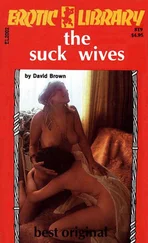
![David Jagusson - Devot & Anal [Hardcore BDSM]](/books/485905/david-jagusson-devot-anal-hardcore-bdsm-thumb.webp)
